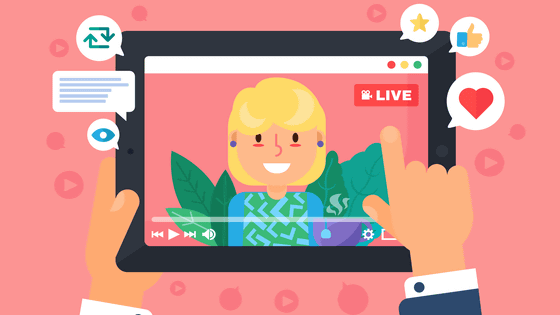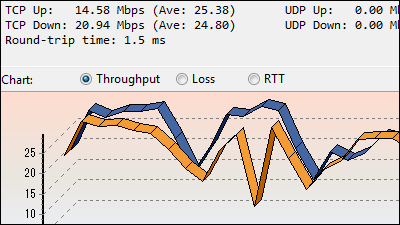What is the difference between streaming and downloading?

Video streaming services such as Netflix and YouTube have become commonplace, and everyone can watch various videos on their smartphones or PCs anytime, anywhere. Dan Q, a former engineer at Automattic, explains how the word 'streaming' differs from 'downloading.'
The Difference Between Downloading and Streaming – Dan Q

Although streaming and downloading are treated as very different things by many platforms, technically there is no big difference between them. In both cases, a server grabs frames of media, such as video, and sends them to the user's device, where the device temporarily stores them while it processes them. The fundamental difference is in what the device does with those frames: if they are displayed once and discarded, it's called 'streaming'; if they are reconstructed and stored as a video file, it's called 'downloading.'
When streaming on YouTube, etc., a certain number of frames are stored on the computer as a buffer before and after the part being played. This buffering makes it difficult for playback to be interrupted even when the connection is unstable. In other words, all streaming is actually downloading. However, as shown in the animation below, the difference between streaming and downloading is whether the frames stored in the buffer are deleted or kept as files.
Streaming and downloading are not exactly the same, and there are some differences between them: for example, downloads can receive data in any order, while streaming typically requires that media be delivered in chronological order.
Streamed media is also more likely to change quality dynamically or be converted on the fly to accommodate the receiving end's connection speed and device capabilities, whereas downloaded media is usually either initially selected to be the highest quality or pre-selected by the user.

And Dan Q points out that paid streaming media such as Netflix and Hulu protect their content with DRM (Digital Rights Management), which prevents users from keeping copies of the streamed media.
For example, there is a technology called HDCP (High-bandwidth Digital Content Protection) that Netflix and others use for their 4K streams. To play a protected stream, the user's device must run a specific decryption code. That code only works if it can be traced to an HDCP-enabled monitor or TV, and if both the device and the screen promise to only display the image, not store it. The corresponding licenses and decryption keys are provided to monitor manufacturers only by an entity called 'Digital Content Protection LLC.'

By Kai Hendry
However, Dan Q points out that such DRM technology is often broken soon after release. As a result, legitimate paying users are disadvantaged by not being able to watch movies on an external monitor, while pirated copies work on a variety of devices without any problems. Therefore, Dan Q questions whether DRM is benefiting anyone.
In addition, even streaming content protected by HDCP can actually be 'downloaded' by using inexpensive equipment such as an HDMI splitter and a capture card. After all, even if advanced DRM strategies are used, much of it is copied in other ways, and only legitimate users suffer from the burden of DRM, Dan Q said.

Related Posts:
in Note, Software, Web Service, Video, Posted by log1i_yk







